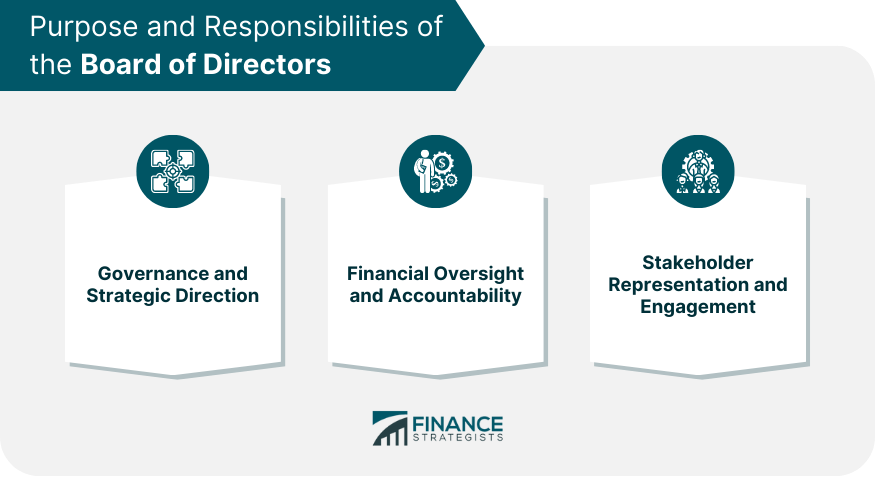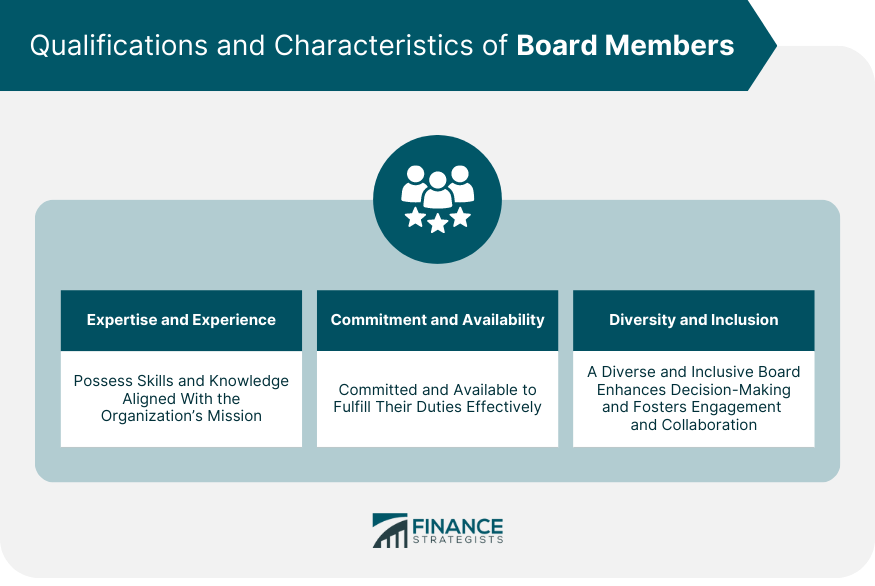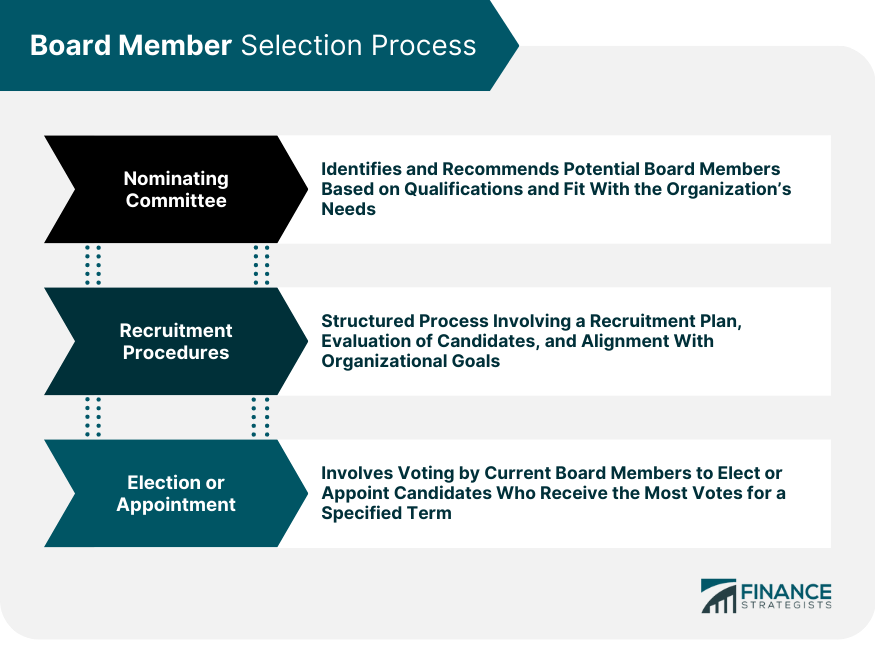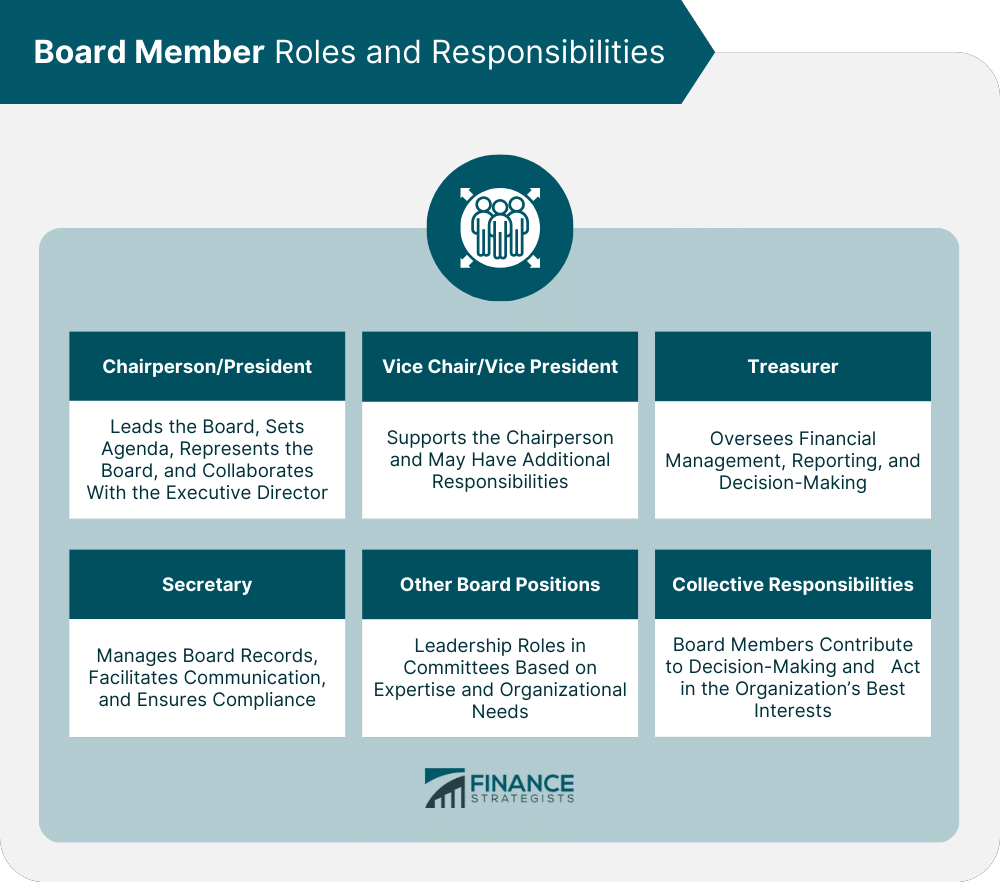The 501(c)(3) Board requirements refer to the specific regulations and expectations set by the Internal Revenue Service (IRS) for the board of directors of a 501(c)(3) organization. In the United States, the 501(c)(3) designation refers to a tax-exempt nonprofit organization, with the board playing a crucial role in its management and oversight. The board's fundamental requirements revolve around compliance, governance, financial accountability, and stakeholder representation. While it's the board's duty to uphold the mission of the organization, the IRS maintains certain requirements to ensure that 501(c)(3) organizations are managed effectively and ethically. Board members are expected to avoid conflicts of interest, maintain the confidentiality of the organization, and serve in a volunteer capacity, meaning they generally cannot receive compensation for their service. The Board of Directors in a 501(c)(3) organization plays a vital role in guiding the nonprofit towards fulfilling its mission and strategic objectives. Being the governing body, the board ensures that the organization complies with applicable laws and adheres to best practices. Their responsibilities include determining the organization's mission and vision, approving budgets and financial strategies, and evaluating organizational performance. Additionally, the board helps to establish the public image and reputation of the organization. It does so by acting ethically, transparently, and responsibly. The strength of a 501(c)(3) organization is often directly related to the effectiveness and dedication of its board of directors. The board is responsible for making significant decisions and setting the strategic path for the organization. This may involve determining the organization's mission, vision, and long-term goals, as well as setting policies and guidelines that direct the nonprofit's operations. The board also plays an important role in ensuring the organization's sustainability. This includes strategic planning, risk management, and securing resources for the organization. It's crucial for the board to take a forward-thinking approach, anticipate changes in the nonprofit sector, and adapt strategies accordingly to ensure the organization's continued growth and impact. The board must ensure financial stability and accountability, which involves developing a budget, monitoring the organization's financial performance, and approving significant financial transactions. The board should also ensure that the organization complies with financial reporting and auditing requirements. In addition to overseeing financial operations, the board has a responsibility to the organization's stakeholders and the public to demonstrate financial integrity. This includes being transparent about how funds are used, ensuring that resources are used effectively to further the organization's mission, and preventing fraud or misuse of funds. The board of directors also serves as a link between the organization and its stakeholders, which may include donors, volunteers, staff, beneficiaries, and the broader community. The board should actively engage with stakeholders to understand their needs and expectations, represent their interests, and communicate the organization's goals and achievements. Engagement with stakeholders can also involve advocacy and fundraising. Board members often leverage their networks and influence to attract donations and other resources for the organization. At the same time, they can advocate for the organization's cause, raising awareness and mobilizing support from the community and other stakeholders. The Internal Revenue Service (IRS) does not set a specific number for the minimum or maximum board size for a 501(c)(3) organization. However, the general legal requirement is that there should be at least three board members: a President (or Chair), a Treasurer, and a Secretary. These positions form the core of the board's leadership and are essential for ensuring the board's functionality and legality. Despite this minimum, best practices suggest that a board should have more than three members to ensure a diversity of perspectives and to distribute responsibilities effectively. On the other hand, there's no definitive upper limit for the board size, but overly large boards may become inefficient or difficult to manage. The appropriate size for a board often depends on the specific needs and circumstances of the organization. For smaller or newly formed nonprofits, a smaller board may be sufficient and more manageable. However, as the organization grows and its operations become more complex, a larger board may be necessary to bring in additional expertise and resources. Moreover, the board size may also depend on the organization's governance structure, the scope of its programs, and the diversity of its stakeholders. For example, an organization that operates in multiple locations or serves a diverse population may benefit from a larger board that can represent different geographical areas or stakeholder groups. The size of a board can significantly impact its effectiveness. Smaller boards may allow for more efficient decision-making and closer relationships among board members. However, they may also put too much responsibility on a few individuals or lack the range of skills and perspectives needed for effective governance. On the other hand, larger boards can bring more diverse skills and experiences, but they may also face challenges with communication, coordination, and consensus-building. Therefore, each organization must find a balance that ensures a diversity of perspectives, maintains efficient operations, and meets its specific needs. When selecting board members for a 501(c)(3) organization, their expertise and experience are vital considerations. Board members should possess skills and knowledge that align with the organization's mission, needs, and strategic objectives. For example, a board may require members with expertise in areas such as nonprofit governance, finance, law, fundraising, public relations, or the specific field in which the organization operates. Aside from professional expertise, board members should also have a track record of leadership and a demonstrated commitment to community service. Their previous experience on other nonprofit boards, in volunteer roles, or in other leadership positions can be valuable in guiding the organization and making informed decisions. Board members should have a strong commitment to the organization's mission and be willing to dedicate their time and energy to their board responsibilities. This includes regularly attending board meetings, participating in strategic planning, overseeing the organization's operations, and representing the organization in the community. In addition to their commitment, board members should also have the availability to fulfill their duties effectively. This may require a significant time commitment, especially for board positions with additional responsibilities such as the Chair or Treasurer. Potential board members should be aware of this commitment and be willing and able to meet these expectations. A diverse board can bring a wider range of perspectives, experiences, and ideas, which can enhance decision-making and increase the organization's cultural competence. This includes diversity in terms of race, gender, age, socioeconomic background, professional expertise, and other factors. Inclusion, on the other hand, ensures that all board members have an equal opportunity to contribute to the board's work and decision-making process. This involves creating an environment where everyone feels valued and respected and where different perspectives are actively sought and considered. An inclusive board can foster greater engagement and collaboration among board members and enhance the board's effectiveness. In many 501(c)(3) organizations, the selection of new board members is facilitated by a nominating or governance committee. This committee is responsible for identifying potential board members, assessing their qualifications, and recommending them for election to the board. The committee may also be involved in onboarding new board members and providing ongoing board development. The nominating or governance committee should have a clear understanding of the board's current composition and its needs in terms of skills, experience, and diversity. The committee should also have a transparent and equitable process for identifying and evaluating potential board members. This process should be guided by the organization's mission, strategic objectives, and values, as well as best practices in nonprofit governance. The recruitment and nomination procedures for board members should be structured and systematic. This typically involves developing a board recruitment plan, which outlines the skills and qualifications needed, the recruitment methods to be used, and the timeline for the recruitment process. Recruitment methods may include public advertisements, targeted outreach to specific individuals or communities, or solicitation of recommendations from current board members, staff, or other stakeholders. Once potential candidates are identified, they should be carefully evaluated based on their qualifications, commitment, and fit with the organization's mission and values. After potential board members have been identified and vetted, the final step is their election or appointment to the board. This process varies among different organizations but typically involves a vote by the current board members. The candidates who receive the most votes are elected to the board for a specified term. Before the election or appointment, potential board members should be fully informed about the organization's mission, the responsibilities of board members, and the expectations for their role. They should also have the opportunity to ask questions and express any concerns. Once they are elected or appointed, new board members should receive a comprehensive orientation and ongoing training to support their effectiveness as board members. The Chairperson, often referred to as the President in some organizations, is the leading figure of the board. The chairperson guides the board's operations and ensures its effectiveness. Their responsibilities typically include presiding over board meetings, setting the agenda, facilitating discussions, and representing the board to external stakeholders. Moreover, the chairperson often serves as a key link between the board and the organization's executive director or CEO. They work closely with the executive to set strategic objectives, monitor progress, and address any issues or challenges. The chairperson should demonstrate strong leadership, communication, and diplomacy skills. The Vice Chair or Vice President serves as the second-in-command to the Chairperson. They support the chairperson in their duties and step in to assume these responsibilities in the chairperson's absence. The vice chair may also have specific responsibilities depending on the organization's needs and the individual's expertise. For example, the vice chair may lead a specific committee, oversee certain strategic initiatives, or act as a liaison between the board and specific stakeholders. They should possess strong leadership skills and a deep understanding of the organization's mission and operations. The Treasurer plays a crucial role in overseeing the organization's financial management. This includes developing the annual budget in collaboration with the executive director or CEO, monitoring the organization's financial performance, and ensuring financial accountability and compliance. In addition, the Treasurer typically presents financial reports to the board, leads the audit process, and guides the board's financial decision-making. They should have strong financial expertise, attention to detail, and a high degree of integrity. The Secretary is responsible for managing the board's records and ensuring effective communication among board members. Their duties typically include preparing meeting agendas, taking minutes during meetings, maintaining board documents and records, and ensuring compliance with legal and regulatory requirements related to board operations. The Secretary plays a critical role in ensuring the transparency and accountability of the board. They should be well-organized, detail-oriented, and skilled in written communication. Beyond these key positions, a board may also include other roles depending on its needs and structure. For example, there may be board members who lead specific committees, such as the fundraising committee, governance committee, or program committee. These roles require expertise in the specific area, leadership skills, and a commitment to the organization's mission. Moreover, all board members, regardless of their role, have a responsibility to act in the best interests of the organization, participate actively in board activities, and contribute to the board's collective decision-making. The IRS generally requires at least three individuals to serve as board members for a 501(c)(3) organization. These members are required to have at least one meeting per year with all members present. The IRS places no restrictions on term length or who can be on the board. The IRS requires that all members of the board be in attendance at a board meeting at least once per year. A meeting must also be held anytime a new director is elected. The board is free to hold as many meetings as they wish so long as those requirements are satisfied. The 501(c)(3) board requirements set the groundwork for the board's roles and responsibilities in governance, financial oversight, stakeholder representation, and strategic direction. The qualifications and characteristics of board members significantly influence the board's effectiveness. Board members should bring a range of expertise and experience, demonstrate a strong commitment to the organization's mission, and have the availability to fulfill their responsibilities. The process for selecting board members should be thoughtful, transparent, and aligned with the organization's needs and values. This includes identifying potential candidates, evaluating their qualifications and fit, and electing or appointing them to the board in a democratic manner. Once board members are selected, they should receive comprehensive orientation and ongoing support to enhance their effectiveness in their roles.What Are the 501(c)(3) Board Requirements?
Importance of the Board of Directors in a 501(c)(3) Organization
Purpose and Responsibilities of the Board of Directors
Governance and Strategic Direction
Financial Oversight and Accountability
Stakeholder Representation and Engagement

Minimum and Maximum Number of Board Members
Statutory Requirements
Organizational Needs and Considerations
Board Size and Effectiveness
Qualifications and Characteristics of Board Members
Expertise and Experience
Commitment and Availability
Diversity and Inclusion

Board Member Selection Process
Nominating and Governance Committees
Recruitment and Nomination Procedures
Election or Appointment of Board Members

Board Member Roles and Responsibilities
Chairperson/President
Vice Chair/Vice President
Treasurer
Secretary
Other Board Positions and Committees

501(c)(3) Board Meeting Requirements
Conclusion
501(c)(3) Board Requirements FAQs
To form a 501(c)(3) Board of Directors, the organization must have at least three individuals who serve as board members with voting rights and meet all applicable state laws. The board should also include representatives from diverse backgrounds with experience in the organization's field of activity.
The primary role of a 501(c)(3) Board of Directors is to provide oversight and guidance for the organization’s activities, ensure fiscal responsibility, set direction for long-term growth, and ensure compliance with relevant laws and regulations.
The members of a 501(c)(3) Board of Directors are typically not compensated, though they may receive reimbursement for certain expenses incurred while performing their duties.
Yes, the formation and operation of a 501(c)(3) Board of Directors must comply with all applicable federal and state laws related to nonprofit governance, such as those pertaining to conflict of interest policies and financial oversight. Additionally, the board should also abide by any relevant regulations and guidelines set by the IRS for 501(c)(3) organizations.
Yes, board members are prohibited from engaging in activities that may conflict with the mission or purpose of the organization, such as using its funds for personal gain or taking part in private business transactions. Additionally, they must adhere to all applicable laws and regulations.
True Tamplin is a published author, public speaker, CEO of UpDigital, and founder of Finance Strategists.
True is a Certified Educator in Personal Finance (CEPF®), author of The Handy Financial Ratios Guide, a member of the Society for Advancing Business Editing and Writing, contributes to his financial education site, Finance Strategists, and has spoken to various financial communities such as the CFA Institute, as well as university students like his Alma mater, Biola University, where he received a bachelor of science in business and data analytics.
To learn more about True, visit his personal website or view his author profiles on Amazon, Nasdaq and Forbes.











